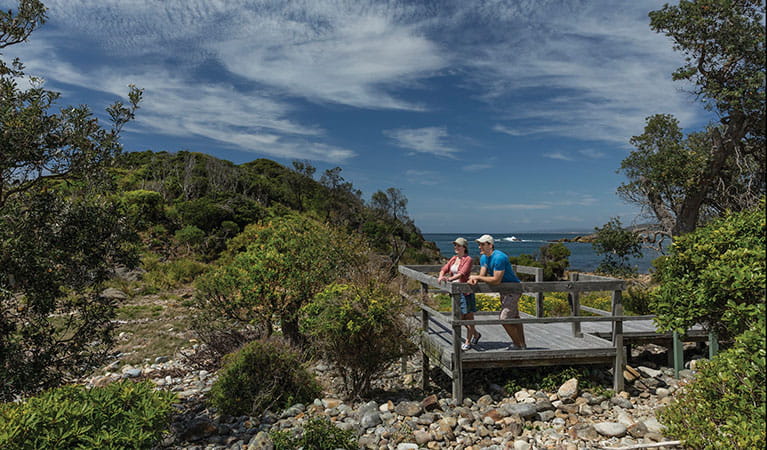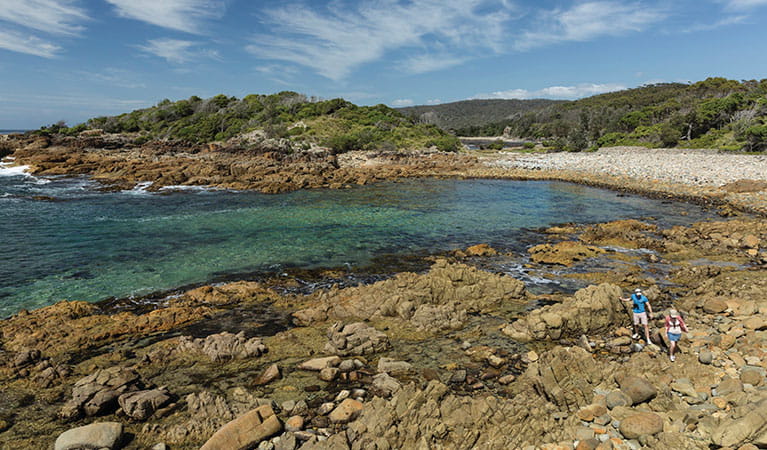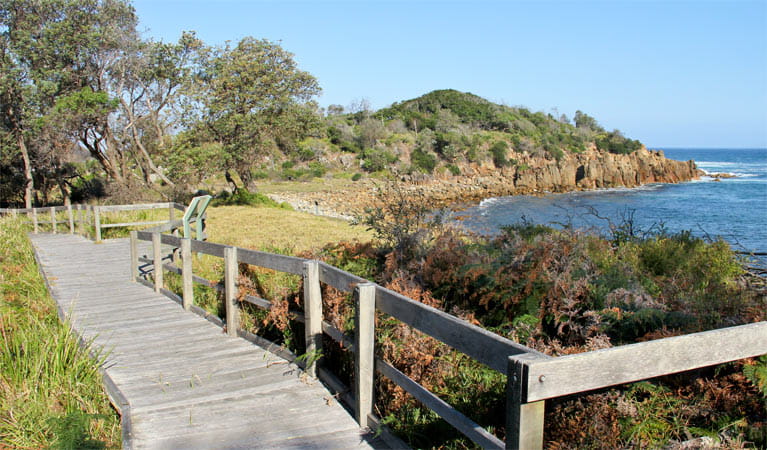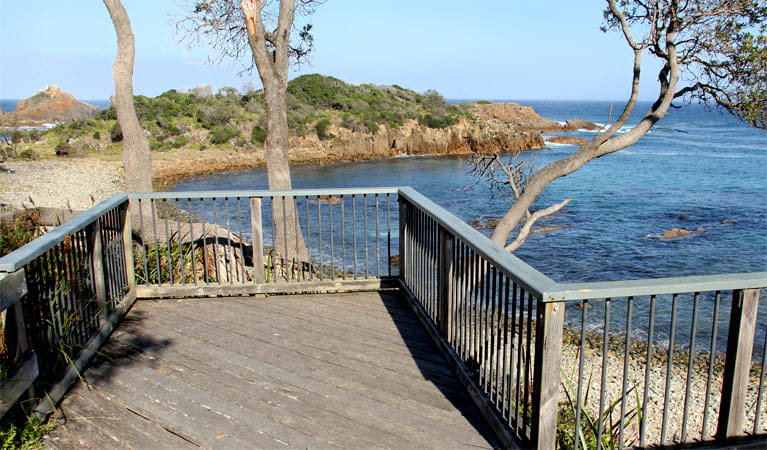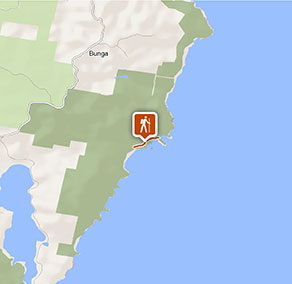Mimosa Rocks walking track
Mimosa Rocks National Park
Overview
Great for walking with children, the easy Mimosa Rocks walk takes you along a short boardwalk to a lookout. You may spot the Mimosa shipwreck on the rocks below.
- Where
- Mimosa Rocks National Park in South Coast
- Accessibility
- Easy
- Distance
- 1.6km return
- Time suggested
- 30min - 1hr
- Grade
- Grade 3
- What to
bring - Hat, sunscreen, drinking water
The Mimosa Rocks walking track is in the northern section of the park, it’s an easy walk so a great one for children, plus the northern-section is wheelchair accessible.
Start your walk at Aragunnu campground – there’s a well-defined track linking the section’s two picnic areas. Follow this short track then continue north another 250m on a paved path and boardwalk.
If you only want to complete the wheelchair accessible section of this walk, leave your car at Aragunnu picnic area carpark where the boardwalk begins.
The boardwalk crosses over the largest Aboriginal midden in the park – take your time to read about the history and significance of the area along the way.
At the boardwalk’s end, you’ll be rewarded with dramatic views over the rocks from the lookout. Keep an eye out for the large pyramid-shaped rock – beneath it rests the shipwrecked Mimosa, a paddle steamer that ran aground in 1863, and after which the park is named.
Google Street View Trekker
Using Google Street View Trekker, we've captured imagery across a range of NSW national parks and attractions. Get a bird's eye view of these incredible landscapes before setting off on your own adventure.
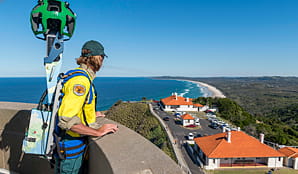
Saving Our Species program
Australia is home to more than 500,000 animal and plant species, many of which are found nowhere else in the world. Saving our Species is a statewide conservation program that addresses the growing number of Australian animals and Australian native plants facing extinction.

General enquiries
- National Parks Contact Centre
- 7am to 7pm daily
- 1300 072 757 (13000 PARKS) for the cost of a local call within Australia excluding mobiles
- parks.info@environment.nsw.gov.au
Operated by
- Narooma office
- Monday to Friday, 9am to 4pm. Office open by appointment only. Closed public holidays.
- 02 4476 0800
- npws.eurobodalla@environment.nsw.gov.au
- 10 Graham Street, Narooma NSW 2546
Park info
- in Mimosa Rocks National Park in the South Coast region
Mimosa Rocks National Park is always open but may have to close at times due to poor weather or fire danger.

